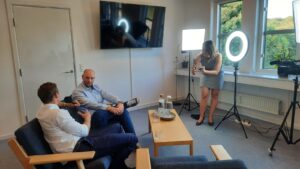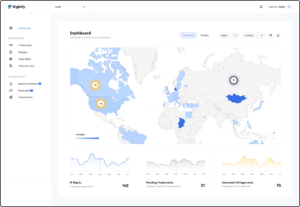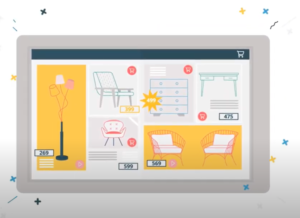The Digital Transformation Show [E4P2]: iPaper, product discovery and catalog automation in a COVID/-19 context
This is probably my favorite part of the Episode with Mark Rasmussen, CEO at iPaper. We discussed the company’s business model, how it became a global enterprise, what is their concept of “product discovery” all about, and how its integration with WhatsApp resulted in a strong entry to the Latin American market.

This is probably my favorite part of the Episode with Mark Rasmussen, CEO at iPaper. We discussed the company’s business model, how it became a global enterprise, what is their concept of “product discovery” all about, and how its integration with WhatsApp resulted in a strong entry to the Latin American market.
Watch the interview or read the transcript below.
CEO at iPaper
Also read:
The Digital Transformation Show [E4P4]: CEO at iPaper, from web development to company business
Estefanía Zárate Angarita: A local company that has expanded worldwide, right? You were mentioning so many countries that are now part of the pool of customers that you have right now. Why do you think that you became a worldwide company?
Mark Rasmussen: For the first many years we focused just in Denmark, we had a local sales force, we had cars driving around who visited Danish companies again and again and we were definitely leading the Danish market. At some point, especially when I took over in 2014, we took a status on everything and we wanted to grow more, and we pretty much owned the whole Danish market so we couldn’t grow much more from there.
E: So, Mark. iPaper works in a subscription-based which you were mentioning before, and this makes it available for people who don’t want to develop anything on their own, something in house… So how does the subscription work, what are the licenses?
M: Our main model is on you having a number of catalogs available and the pricing model is basically based on how much automation you want and how many end users you want to expose to the solution. So, let’s say that you are a supermarket chain, you have a million visitors every single month who want to see your catalog, that is the main value metric that we track you on, a million sessions.
You might also have a different chain that doesn’t have that many end users, sessions, but you have a lot of catalogs and you need all of them to be interactive, you don’t want to do it manually. In that case, we can automate everything for you.
And obviously we can combine the two so if you have a lot of end-users, sessions seeing the catalog, and you want to automate everything, we can combine the two. So those are pretty much the two things that you buy into.
E: Okay, so for people who don’t understand the concept or who have never heard about it, what do you mean by automating this process?
M: So, imagine that you are a supermarket chain in Germany and you have 500 different stores all across the country, and since Germany is so big, these different stores actually have different products on offer every single week. So if you have a weekly leaflet with the different offers, that leaflet is not going to be the same for all of the stores, So you pretty much have 500 different types of leaflets, every single week.
Each of these leaflets has to be digitized, they have to make them interactive so you can click on the products, you have to put them on the website for the right stores so when you go to the store’s website you are going to see the right catalog at the right time. This whole process used to be manual, but we automated all of it.
This chain, when they actually create the catalog, rather than just sending it for the printing, they send it to us as well and we automate the whole process of figuring out what store this leaflet is formed how long is it active for, where should be put on the website, so they pretty much don’t have to think about anything, it just runs automatically.
E: So, how does the technology behind the software work? Is it image recognition, is it text recognition? How does it work?
M: It is kind of simple. We get a PDF file, that’s the main source material that we need, we take the PDF file, we split it into atoms, we got all of the different pages, we’ve got the text on the pages, we’ve got the images and based on this data we detect the products inside of the catalog and we’ve got your product data to begin ERP system access when we get the product data from you and mix the two together so we know that a given product in on page seven, we got all of the product data form you and mix them together so that when you click on a product in the solution it is added to a basket. We’ve got the right price, the right inventory status, and so on.
E: How does the software actually have an impact on your customers?
M: Simply what we do, doesn’t really replace something that they do directly today, so we are not necessarily optimizing something that they do today but we enable them to do something new. If they print a lot of these catalogs offline, the cost involved in printing them and actually distributing them and sending them out both in terms of economics and climate is huge. And the cost for a product for iPaper is like a rounding error in the total economics of producing catalogs.
When it comes to the effect of catalogs, a lot of these companies don’t measure it directly because their catalogs aren’t necessarily the place where you buy the product, it’s the place where you become inspired to buy the product at some point. If you go to a supermarket chain you might read their weekly leaflet and you don’t buy it right there, but you look at this can of tomatoes and all of the sudden you think “I need some gazpacho this weekend”, but you don’t buy the product at the moment, you buy it a couple of days later when you are at the supermarket and you pick up this kind of tomatoes. So, it’s difficult to measure the direct impact.
But if you have a whole distribution of these catalogs and you send them out to all of the worlds, and you replace that with the iPaper solution, that’s an optimization of nearly a 100%, our cost is so low compared to the cost of actually printing and distributing these catalogs.
E: Makes sense, Mark. Also, you have a developing concept right now inside of iPaper which I have heard about before that is “product discovery”. You used the word “inspiring” and “inspiration” before, what is this all about? “Product discovery” and “inspiring” your final users…
M: Product discovery is the concept that goes on in the end consumers’ minds when they are looking for products. You might go to a website and don’t know exactly what you need, let’s say you are looking for a keyboard for a computer that you bought; you might go to your local electronics store website, search for a specific keyboard model, you are going to find a result, you are going to buy it, and everything is good.
Product discovery supports you when you don’t know exactly what you are looking for. So let’s say you go to that same website and you know that you need a keyboard but you have no idea what exactly you are looking for. In this case, you might search for “keyboard” and you are going to get 127 different results, and… where do you go from there? What do you choose? You might not know anything about keyboards. You just get a grid of results of different keyboards and you are left on your own. That is not a good product discovery experience.
If we compare the two to say, IKEA, and take the analog stores, most IKEAs have two different storeys, they have the warehouse and they have the inspirationallñ upper floor. And say you go straight into the warehouse, you’ve got all of these rows, columns, aisles of products and if you know the product you are looking for you are going to go to aisle F, row 25, column B, and you can pick your product and you can buy it.
But if you, let’s say java a kid, 2-year-old, and you need to decorate his room, and you really don’t know what you’re looking for, you’re looking to find out what you’re looking for… in that case, you are going to go to the first storey, you are going to go to the kids’ section, you are going to look around all of these model rooms, and you still don’t know what you are looking for but the moment you spot that lamp on the wall you know “I need that lamp”, and now you are going to go to the warehouse and buy it.
And this is the role that catalogs might play in that they inspire you, so even though you don’t buy directly at that upper floor, the inspirational floor, you see the product, you become aware that you need it and then you buy it.
E: So it is sort of taking the showrooms of traditional stores to a catalog, or to an online shopping experience…
M: It is pretty much a layer on top of the simple web store, which is optimized completely for those consumers who know what they are looking for, and we help those consumers that might not know exactly what they are looking for. But if they are interested in a category or a brand, or a concept, by using the catalogs or some of our other products you are able to create these inspirational environments where you can guide the user towards the products that you think they are looking for.
E: I would like to go back a bit to talk about retail, and direct sales companies, more specifically the latter. Because there are many people working in this industry that come sort of in a chain. So we have the company, we have the sales representatives, and we have the end-users or the final clients. How do you think both the sales representatives and the final clients, the final buyers are benefiting from iPaper?
M: What typically would happen is that you have these representatives, they receive catalogs, they are going to walk door to door, knock on the doors, show the catalog, talk about the products – because these representatives, they are really the experts on this products – and they don’t sell them themselves directly, they are representatives of some other company who sales the products.
In this case, the catalogs really support this journey by being digital, because the reach by being digital is so much higher than the old analog way of walking around, especially in this COVID-19 days when you are not even allowed, is not safe to walk around, you can still do the same business online by sharing these catalogs on social media, on different networks, sending them by mail, text messages to all of your friends and you can still be the same expert that you used to be.
E: Mark, you started saying that this pandemic had somehow benefited many companies, including yours, but have you heard from your customers for example, what the impact has been for them?
M: We spoke to a lot of them and the story we get in different variations is, international companies that have a lot of markets, and some of these markets are highly digital and some of them are very traditional. From headquarters, they want to move in a digital direction but those markets might sometimes be lagging behind.
The whole pandemic has forced some of these countries to change the way they approach sales because stores have been shut down, malls have been shut down, you cannot walk around so they have been kind of forced to go digital, and they have done so. The interesting thing is, when we ask some of these customers, “when the pandemic is over, do you believe this market is going to go back to the old ways?”, we typically get kind of a smile, like “no”. They have seen the light, they have seen the future and they are definitely going to stay digital.
So in that way, I think that the pandemic has actually moved the whole digitalization process some years forward.
E: Maybe the global market needed some kind of push or boost to go fully into this digital transformation process…
M: I think a lot of these markets got a process that has worked for decades, it has worked for so long. And to change that is a huge risk that you are undertaking. You’ve got something that works and you can try to slowly migrate but you might have consumers who are not really that digital… so trying to push that transition can hurt your business, and that is a chance to take. And even though I may believe that this is definitely the future, it can be difficult to persuade these markets from a high central quarter in a different country that this is going to work for them as well.
E: I believe that you have a semi-new feature that is a WhatsApp checkout possibility within your catalogs, and you experienced that this new feature opened up in several markets that use WhatsApp more than probably the Danish market itself.
M: Oh, yeah.
E: Can you tell us a bit more about this discovery process of new markets due to a new feature that you released?
M: So, we have never been that big in Latin America until a couple of years ago when a potential client approached us and was interested in our catalog solution. We ended up selling to them, they began using it, and all of a sudden they asked us “Can we check out the basket through WhatsApp?”, and I have to be honest, we were like… “WhatsApp? Check out a basket? But that is a chat network, how do we check out a basket?”. And we realized that the business model is that these representatives would send the catalog to all of their friends, those friends would add products to the basket and they initiate a chat with the parent company, and through this chat, you were now talking to a salesperson at the company where you could actually checkout. So you wanted to be able to initiate a WhatsApp talk within your catalog.
So we found a workaround, we made a quick prototype but we made it work, and over a couple of months we made the actual integration so you are now able to have a full basket and check out the concept through WhatsApp.
Ever since doing that, this original company has obviously used it quite a lot, but we started seeing different companies from the Latin American market simply approaching us and saying… “what they’ve, we want that as well”. So all of the sudden the business just rolled, more or less exponentially over a couple of years, and today WhatsApp is one of our main features.




